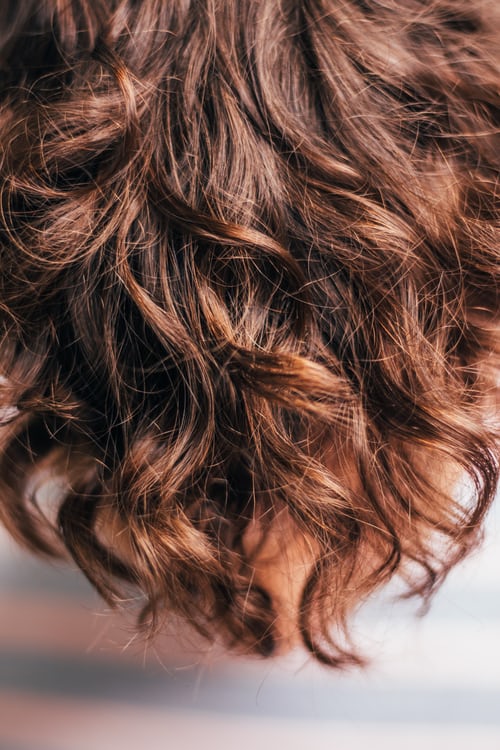Table of Contents
Hair Care Routine For Thin And Damaged Hair

Getting a hair care routine is like starting a skincare routine. Once you find one that works for you, you will rarely go the wrong way. But the hair care process of finding that routine can seem a bit daunting, especially when there are tons of options for people with the same hair type.
Here is an overview of everything you need to know to find the right hair care ritual for you. Your hair care routine ultimately depends on a few factors.
From the feel of your hair to the styles you prefer, these elements will change the routine you choose.
Your natural hair type or texture
Hair types are usually thin, thick or coarse and fall into one of four categories:
- straight
- wavy
- curly
- frizzy hair
Each has its advantages and disadvantages. For example, straight hair generally looks and feels greasier than Trusted Source curly hair because oil penetrates the hair shaft quickly.
If your hair is bleached, dyed, or chemically processed
If your hair has come in contact with any dye, bleach, or chemicals, you may need to think carefully about your routine. People with colored hair are advised not to wash it every day to avoid premature discoloration and drying of the color.
And discolored hair may need extra nourishment in the form of a conditioner or masks.

How do you want to use your hair daily?
Do you like to style your hair? Curl it? Leave it completely natural?
It’s another thing to keep in mind, especially if you are a fan of using harmful heat tools.
If you have specific concerns
It’s normal to find at least one exposure of your hair tricky, be it frizz, a scaly scalp, or dry, damaged hair. The rest is to find the best solution.
However, each routine shares some basic components.
While your hair type and concerns will change your hair care routine in some way, there are some basic steps that can benefit every person.
Clean
Cleaning is a balance between removing things like dead skin and product residues—a reliable source without removing hair from its natural oils. Without a good wash, the sebum will build up and leave unwanted oil. For example, the dead skin will be removed if not removed. The skin renews itself every 28 days Reliable source, and this can be noticeable if the hair is not clean.
And if you’re an avid swimmer, you don’t want to leave bleach in your locks. The longer you sit, the more time you have to strip the hair of its natural elements and cause damage.
Conditioner your hair after shampoo
Conditioners have countless benefits. The main one is hydration, but others include detangling shining and reducing frizz.
The main ingredient in a conditioner is called a cationic surfactant. Reliable source.
When the hair is wet, attach and cover the strands to replenish the moisture the shampoo may have removed.
Moisturize and seal
To add more hydration to the hair, you may want to follow a two-step process known as hydrate and seal. This can be especially useful for curly or curly hair that is often dry.
The goal is to trap moisture, not block dryness, using a moisturizing product and sealing oil
Detangle
Detangling is essential to stop the break and make your life so much easier. But you need to use the right tools, such as a wide-toothed comb, to avoid accidentally pulling your hair out.
It all depends on your hair texture. You may have to detangle every day or much less often.
Style and protection
Thanks to a range of tools and tricks such as volumizers and gels, you can practically style your hair the way you want. But if you’re a fan of heated appliances, protect those strands with a heat protectant spray.
Spot treatment
Hair spot treatment means choosing a specific area that is bothering you and doing something to fix it.
For example, you are fed up with how curly your hair is, so try a protein treatment.Or you have noticed that your scalp feels very dry, so use a super nutritious product designed for that area.

The products and tools used at each step vary widely.
While most people religiously adhere to the above steps, there is no set product or resource to subscribe to.
Cleaning and conditioning
They are purifying shampoo. A shampoo that works deeply, illuminating formulas work to remove the build-up of the hair. Limit use to about once a month as they can remove natural oils.
Daily “shampoo
This shampoo is used for normal washing and may not need to be applied daily, as the name implies, but every time you feel your hair needs cleaning.
Rinse “daily” or conditioner.
The conditioner you use most is probably a conditioner that rinses off after a few minutes. It is best applied to the center and ends, as applying roots can result in an oily scalp.
You can also check:https://theinfodom.com/professional-manicure-and-pedicure-step-by-step-at-home/
Leave-in conditioner.
Apply this type of conditioner in the same way, but do not rinse it off. This ensures a higher nutritional level.
Deep conditioner.
For even better hydration, try a deep conditioner. Ideal for dry hair, these conditioners are designed to last longer.
Hair lotion
Once the hair is clean and cared for, a cream lotion can provide more protection against breakage and drying. It also provides a light and non-rigid grip.
Oil/Serum
When it comes to oil, things go a bit long. Improve the natural oils in your hair, retain moisture, and strengthen the strands.
HOW TO Detangle
Brush :
Wet hair can break more easily when comb, although this does not apply to textured or frizzy hair types. A wide-toothed comb can be a less harmful alternative.
Brush selection:
There are different types of brushes. Some find the hair too hard for the hair, so choose a Wood comb. Avoid brushing your hair too much. Once a day is usually sufficient.
Spray:
If you notice tears coming out when brushing or combing, apply a detangling spray beforehand.
Serum:
A richer way to deal with those knots, a detangling serum can condition the hair and make it softer for c
The order of your routine is urgent, and consistency is key
- You won’t notice dramatic results at night, although the effects of masks and certain styling products are immediately noticeable.
- It takes a while for your hair to get used to the new products. In some cases, this can be up to a week.
- But it can take at least a month for dry or damaged hair to reap the benefits.
- The order in which you apply products can also make a difference. While this depends on your hair type and texture, there are some general rules.
- Shampoo, conditioner, and all shower products should be applied first, followed by heat protection, a volumizer or mousse, and shine serum.
- Then you can blow-dry and style your hair by setting it with a gel (or similar product) and hairspray.
- combing to smoothly find their way.
Deals
Treatment of the scalp:
An exfoliating scalp treatment can unclog the follicles, stimulate circulation for growth, and rely on issues like itching. Use once or twice a month.
Protein treatment:
Frizzy or broken hair may need an extra dose of protein. These monthly treatments fill holes in the cuticle, strengthening and smoothing the strands.
Targeted Mask:
Often infused with nourishing ingredients, hair masks linger for a few minutes to deeply replenish hair and remedy dryness, split ends or frizz.
Stylize and protect
- Mousse. It sounds super retro, but the modern mousse adds texture and volume to the hair and can even enhance curls. It does not leave a sticky or lumpy feeling.
- Wax. A thicker product, hair wash provides more retention and increases shine. Also, you should not make the wires feel stiff.
- Ointment For a durable and super shiny look, go for the pomade. It does not dry out, giving it an elegant finishing touch.
- Gel. Styling gel can give her everything from light hold to the super stronghold, depending on the product you use. However, all gels provide remarkable texture and shine.
- Dry shampoo. If your hair gets greasy quickly enough, but you don’t want to wash it every day, a little bit of dry shampoo can get rid of the unwanted oil. But it tends to accumulate on the scalp, so try not to use too much.
- VolumizerDoes the hair look loose? Volumizers lift the hair out of your head so that it looks thicker and feels light.
- Texturizer This category can encompass everything from salt sprays to curlers and is designed to add texture to the hair and maintain styles.
- The shine of serum or spray. These products sit on the hair surface, resulting in a smooth, shiny appearance. Apply from the ends to the center.
- Hairspray. Today’s hair sprays have different holding power and can even address concerns like frizz. Unlike years ago, they don’t leave the hair super stiff.
Spray for thermal protection. Whether you use a hairdryer, iron, or curling iron, you have to protect those locks. These sprays form a barrier to prevent exposure to extreme heat.
Some general tips and tricks that will benefit all hair types.
Finally, it’s worth knowing some useful things that apply to any hair texture and concern.

Get cuts regularly
If your hair doesn’t look healthy, it could be because it needs cutting.
Get a hair cut every 6 to 8 weeks is considered beneficial for reducing breakage and split ends, as well as for growth.
Use room temperature water, not hot.
Dipping hair in hot water can dry it out and, if dyed, can fade quickly.
You don’t have to go through an ice-cold shower or bath. Instead, switch to warm water.
Make sure you get these nutrients in your diet
Even your diet can benefit your hair.
Proteins
Proteins, also called hair building blocks, only reach the hair if they are consumed enough. If it is missing, expect to see vulnerability and order.
Iron
An iron supplement is also an important source of life for hair. If the body does not have enough, hair growth can be affected Reliable source.
Vitamins A and C
Vitamins A and C also deserve attention. The former is necessary to produce natural hair oils, while the latter aids in collagen production Reliable source, strengthening the hair.
And don’t forget omega-3 fatty acids. These are necessary for the hydration and general health of the scalp.
Of course, go where possible.
Letting your hair breathe can work wonders. This can mean limiting the use of heat by air-drying it and avoiding hair straighteners and curling irons.
Lifting your hair in a tight ponytail can also cause tension, so lower it to stop pulling.
And if you don’t need to use a designer product, don’t use it. This way, you reduce the accumulation of waste.
conclusion
Finding a hair care routine can take a few weeks not several days,
But once it’s neat, you’re on your way to getting the hair you deserve.
